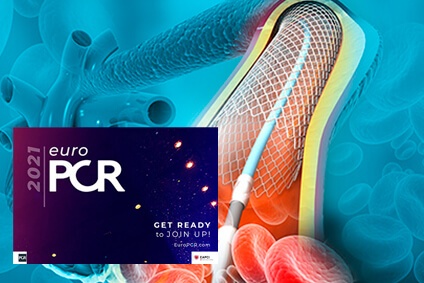According to the CASTLE trial, the Orsino stent—a biodegradable, ultrathin, sirolimus-eluting stent—provides the same results at 12 months as Xience in angioplasty guided by intravascular imaging. This research was presented at the virtual EuroPCR 2021 Congress.

Previous studies (BIOSTEMI and BIOFLOW V) showed that Orsiro was superior to Xience in reducing target-lesion revascularization. However, the reason behind this difference was unknown. Was it the thinner struts? The drug? The polymer?
This study sought to explain said outcomes by eliminating differences in implantation technique. Thus, “matching” was performed using intravascular imaging to guide angioplasty.
It should be noted that CASTLE was conducted in Japan, where optical coherence tomography (OCT) and intravascular ultrasound (IVUS) are used almost routinely.
Between 2019 and 2020, 1440 patients were randomized to undergo angioplasty with Orsiro vs. Xience stents. Ninety-eight percent of angioplasties were guided by intravascular imaging.
The composite endpoint of cardiovascular death, vessel infarction, and clinically justified lesion revascularization at 12 months was 5% for Orsiro vs. 4.9% for Xience (both below the expected thresholds).
Though preliminary—only 70% of population underwent follow-up—, these results meet the criteria for non-inferiority.
Final results will be available shortly, and follow-up is set up to continue for 24 and 36 months.
Original Title: A randomised study comparing imaging guided implantation of Orsiro and Xience – CASTLE study.
Reference: Nakamura M. et al. Presentado en el congreso EuroPCR 2021.
Subscribe to our weekly newsletter
Get the latest scientific articles on interventional cardiology





